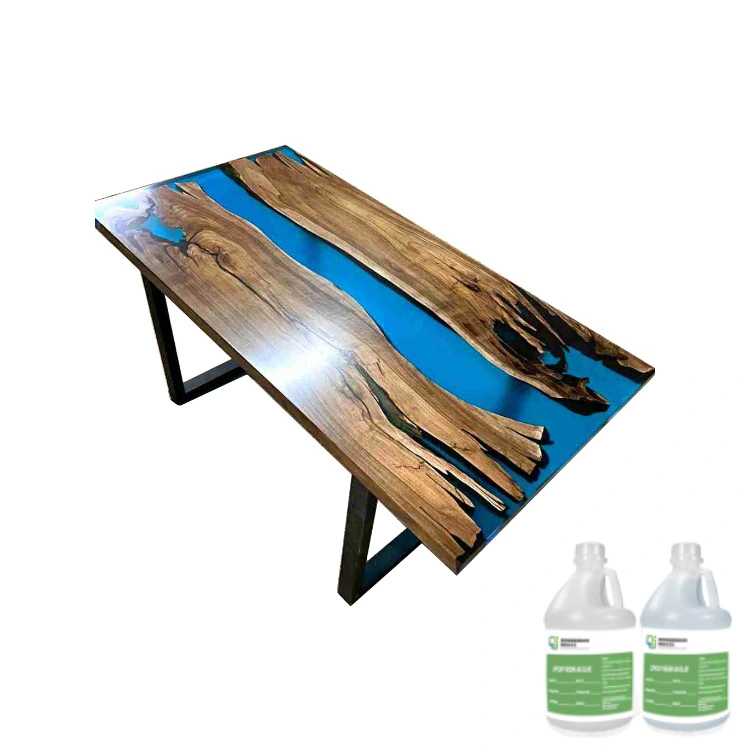The Best Chemical-Resistant Composites
2024-11-06 17:20:44
The need for materials that can survive harsh chemical conditions is growing in today's industrial scene. Chemical-resistant composites have changed the game by providing unmatched performance and endurance in corrosive environments. In-depth discussions of these extraordinary materials' characteristics, uses, and benefits are provided in this blog.
Understanding Chemical-Resistant Composites
The Science Behind Chemical Resistance
Chemical-resistant composites are specially engineered materials that can endure exposure to aggressive chemicals without losing their structural integrity. These composites usually feature a polymer matrix, chosen for its superior chemical resistance, reinforced with fibers or particles to improve mechanical strength and durability. This thoughtful combination not only protects the material from harsh environments but also ensures it maintains performance under challenging conditions, making it ideal for a variety of industrial applications.
Key Properties of Chemical-Resistant Composites
Chemical-resistant composites are vital in many different industries because of their exceptional range of features. They offer superior electrical insulation, a high strength-to-weight ratio, exceptional thermal stability, and exceptional corrosion resistance. These materials also frequently have low permeability, which reduces chemical absorption and aids in preserving their structural integrity over time. Chemical-resistant composites can function dependably in harsh settings thanks to this mix of properties, which improves safety and effectiveness in applications like chemical processing and aerospace.
Comparing Chemical-Resistant Composites to Traditional Materials
When compared to traditional materials like metals or plastics, chemical-resistant composites provide distinct advantages that set them apart. They excel in corrosion resistance and weight reduction compared to metals, making them lighter and more efficient. Additionally, they surpass plastics in strength and dimensional stability, ensuring they maintain their shape and performance under stress. This unique blend of properties positions chemical-resistant composites as the ideal solution for applications where exposure to harsh chemicals poses significant risks.
Applications of Chemical-Resistant Composites
Chemical Processing Industry
In chemical processing plants, chemical-resistant composites are widely utilized in storage tanks, pipes, and valves due to their remarkable durability. Their capacity to endure prolonged exposure to corrosive chemicals not only guarantees an extended service life but also significantly reduces maintenance costs. Additionally, their lightweight nature simplifies installation and transportation, providing substantial logistical advantages. This combination of factors enhances operational efficiency and ensures reliable performance in demanding environments, making these composites a preferred choice in the industry.
Aerospace and Automotive Sectors
Chemical-resistant composites are being used more and more in the automotive and aerospace industries for applications including fuel tanks, hydraulic systems, and other under-the-hood parts.
These materials are made especially to withstand lubricants, fuels, and other vehicle fluids, guaranteeing enduring performance under demanding conditions. Their high strength-to-weight ratio makes them a crucial option for manufacturers looking to save weight and maximize functionality because it not only improves structural integrity but also fuel efficiency and overall vehicle performance.
Environmental and Waste Management
In environmental applications, chemical-resistant composites are vital in waste treatment facilities, landfill liners, and pollution control equipment. Their robust resistance to aggressive chemicals and biological agents makes them particularly effective for containing and treating hazardous materials. This capability ensures not only environmental safety but also compliance with stringent regulatory standards. By utilizing these advanced materials, facilities can mitigate risks associated with waste management and pollution, ultimately contributing to a cleaner and safer environment.

Selecting the Right Chemical-Resistant Composite
Factors to Consider in Material Selection
Selecting the right chemical-resistant composite involves careful evaluation of multiple factors to ensure optimal performance. Key considerations include the specific chemicals being handled, operating temperatures, and mechanical stress requirements, as well as the duration of exposure. It's also essential to assess cost-effectiveness, ease of fabrication, and the material's long-term performance under anticipated conditions. By thoroughly analyzing these aspects, engineers can make informed decisions that enhance reliability and efficiency in their applications.
Common Types of Chemical-Resistant Composites
There are numerous varieties of chemical-resistant composites that are suited for particular settings and uses. Because of their remarkable mechanical strength and chemical resistance, fiber-reinforced polymers (FRP)—like vinyl ester and epoxy composites—are widely used in a variety of industrial applications. Unmatched resistance to a variety of severe chemicals is offered by fluoropolymer composites, guaranteeing durability in challenging environments. Furthermore, phenolic composites have exceptional efficacy in high-temperature applications, providing dependable performance in harsh environments.
Emerging Trends in Chemical-Resistant Composites
Research into improving performance and sustainability is driving continuous advancements in the field of chemical-resistant composites. A promising alternative that greatly enhances mechanical and chemical resistance is nanocomposites, which incorporate nanoscale reinforcements. Bio-based composites, which are made from renewable resources, are becoming more and more well-liked as eco-friendly substitutes without compromising functionality. These developments demonstrate a dedication to developing safer, more effective materials for a range of uses, satisfying industrial and environmental stewardship requirements.
Conclusion
A significant development in materials science, chemical-resistant composites provide answers for some of the most difficult industrial settings. Their special set of qualities makes them essential in a variety of fields, including aerospace and chemical processing. We may anticipate even more creative uses and enhanced performance in the future as research keeps pushing the limits of what is feasible with these materials.
Contact Us
To learn more about our range of chemical-resistant composites (FR4 Sheet,3240 epoxy sheet,bakelite sheet,phenolic sheet)and how they can benefit your applications, please don't hesitate to reach out. Contact us at info@jhd-material.com for personalized assistance and product information.
References
1. Smith, J. A., & Johnson, R. B. (2022). Advanced Chemical-Resistant Composites: Properties and Applications. Journal of Composite Materials, 56(4), 789-805.
2. Chen, X., et al. (2021). Recent Developments in Chemical-Resistant Nanocomposites. Progress in Materials Science, 118, 100764.
3. Thompson, L. K. (2023). Chemical-Resistant Composites in the Aerospace Industry: Challenges and Opportunities. Aerospace Science and Technology, 132, 107352.
4. Garcia, M., & Rodriguez, F. (2022). Sustainable Chemical-Resistant Composites: A Review of Bio-Based Solutions. Composites Part A: Applied Science and Manufacturing, 154, 106782.
5. Williams, E. H., et al. (2021). Performance Evaluation of Chemical-Resistant Composites in Extreme Environments. Corrosion Science, 188, 109565.
6. Lee, S. Y., & Park, J. H. (2023). Innovations in Chemical-Resistant Composite Manufacturing: A Comprehensive Review. Composites Manufacturing, 14(2), 245-267.







